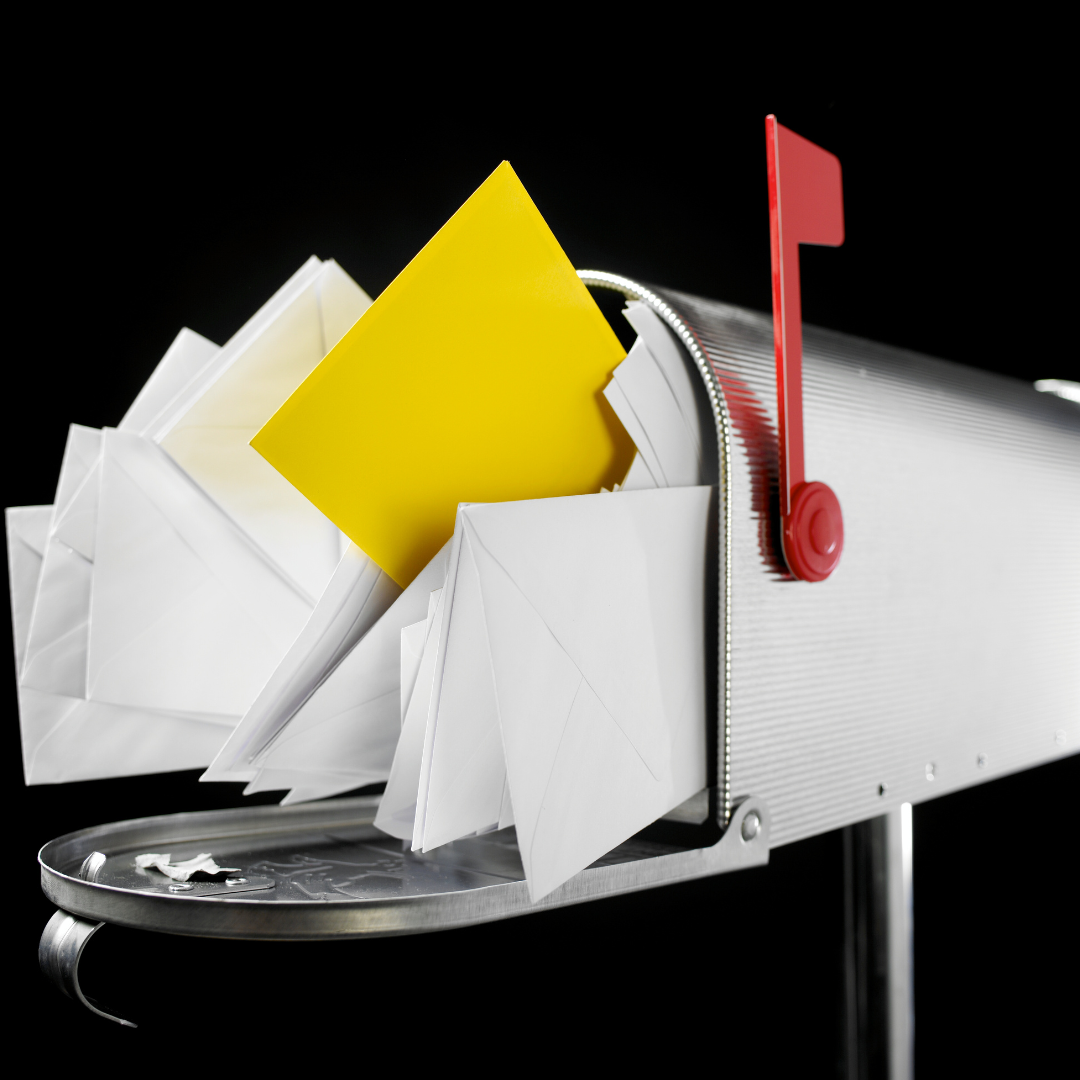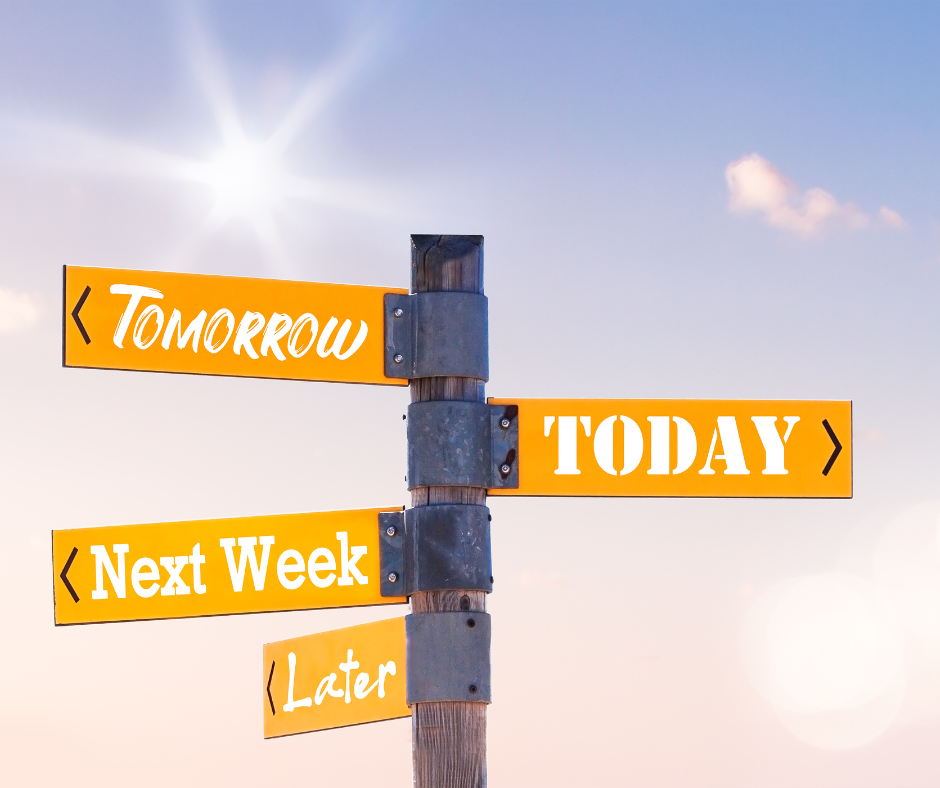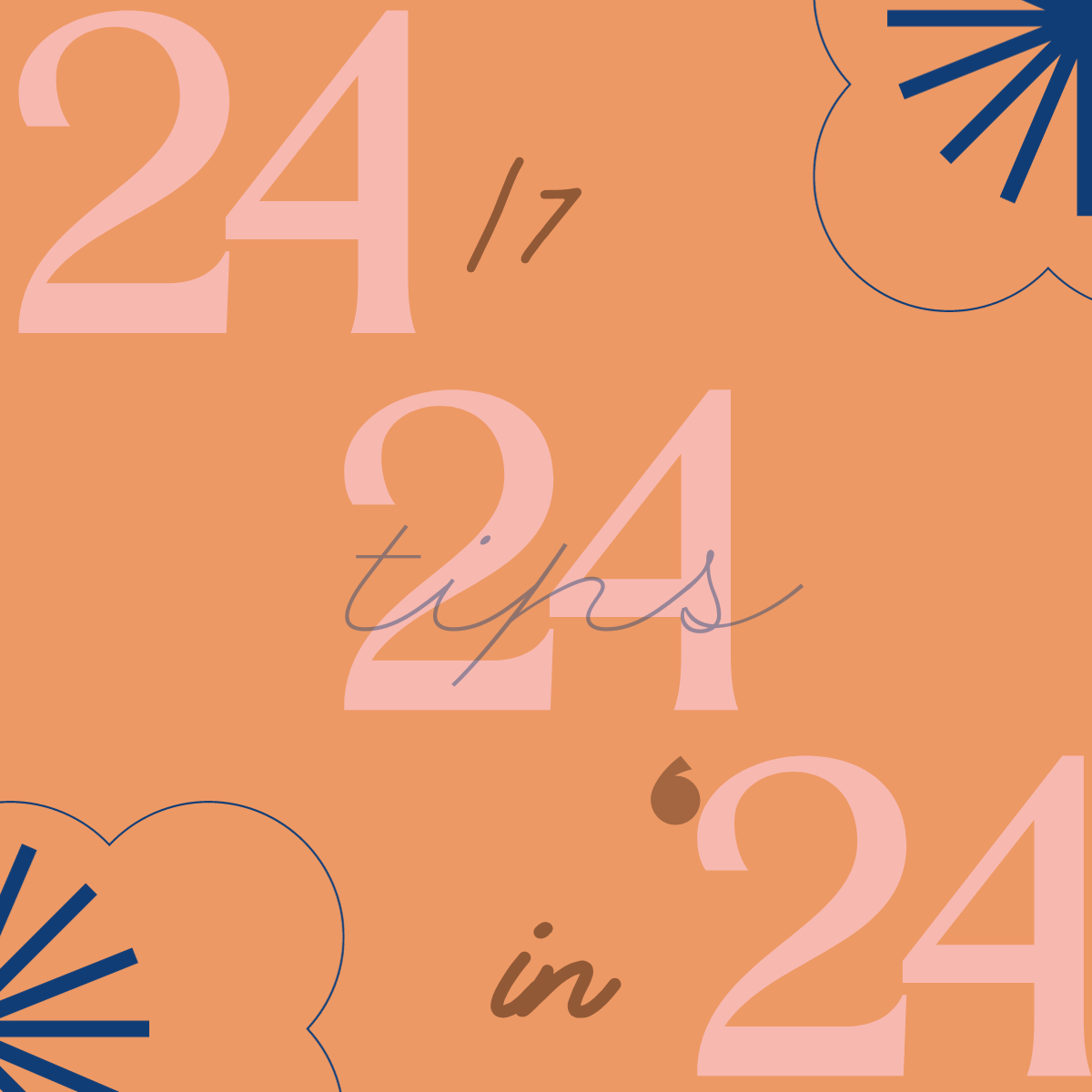From Clutter to Clarity: Boosting Productivity Through Deletion
In today’s digital age, we often find ourselves overwhelmed by the constant influx of information, notifications, and digital distractions. Our digital spaces can quickly become cluttered, hindering our ability to focus, prioritize, and ultimately be productive. Decluttering your digital space allows you to remove distractions and create a focused environment. You get the following benefits when you delete stuff that you do not need anymore
- A cluttered digital environment can thwart quick access to vital materials, resulting in a significant blow to productivity. The inability to retrieve essential information promptly may lead to abandoning planned work or, at best, wasting valuable time searching for materials.
- Streamlining your digital space by removing visual and digital distractions enables a focused environment, promoting increased productivity and mental clarity.
- Despite the decreasing cost of digital storage, maintaining unnecessary data still incurs a hidden expense. Ask people who have run out of free space given by Google which they never thought they would.
Let’s explore the process of digital decluttering and how organizing and streamlining our digital lives can have a profound impact on productivity.
The key to effective decluttering lies in planning spaces for essential items. Once you organize all the useful artifacts into well-organized and planned spaces, you can easily and confidently get rid of the clutter left. Without such a system in place, it is difficult to draw a line between what is important and what is not. Let’s take an example. When you get an email or a message with information and documents, if you already have planned some folders on your computer for those artifacts, you would be able to extract that information and save it at the appropriate planned location and be able to delete the message or mail if it is inconsequential.
One common hurdle to decluttering is the perception of insufficient time, a valid concern. There are a few strategies to beat that:
- Delete material such as Email messages, SMS messages, or documents that are unwanted or whose purpose is met, while you are working on them. Another example would be that you may unsubscribe to newsletters that you don’t need anymore when you are looking at one. I call it a DRIFT (Do it RIght The First Time) policy. Do not accumulate trash till that sunny day when you think you have a whole world of time to delete unwanted material.
- Reserve brief routine time slots, such as when you wait for the elevator, during a commute, or that precious time slot in the loo, for deleting unwanted stuff, such as images, and videos on your phone. You may create a bunch of folders or albums in the gallery app of your mobile, such as selfies, family, friends, funny pics, funny videos, shopping, and good pics. What albums you create depends on what you want to retrieve. When you make a quick pass through what you have received, you move the things into those pre-created albums and delete the stuff you don’t ever need.
- With the above two strategies, you will retain less clutter but even when it gets accumulated over a long time becomes a task. And you will need a time slot to clear that stuff. You don’t have to set a fixed frequency to do that as that would be a little too artificial to get you enough motivated to take up. It should be one of your, what I call, “once in a while” routines. You could list down all such routines “on the back” of your to-do list to review and bring it to the to-do list, whenever you feel you have enough clutter to clear and also have some time at your hand, like a canceled meeting.
However, caution is crucial when deleting, as there’s a risk of accidentally discarding essential items. Leveraging digital recycle bins, offered by various apps and operating systems, provides a safety net. Creating recycle folders within important directories further mitigates the risk, allowing for secure storage until the certainty of disposal.
In conclusion, digital decluttering emerges as a potent tool for enhancing productivity in our digitally saturated lives. By actively organizing digital spaces and managing communication channels, we unlock improved focus, efficiency, and mental clarity. Embracing the principles of digital decluttering empowers individuals to harness the full potential of digital tools, fostering a more productive and streamlined digital existence.
Subscribe to my newsletter, to get tips like this and more, directly in your inbox!
Stop Emailing Yourself: Upgrade to Google Keep for Smarter Reminders
Do you find yourself constantly sending emails to your own inbox as reminders? It’s a common habit, but there’s a more efficient way to stay organized and on top of your tasks. Say goodbye to cluttered inboxes and hello to streamlined reminders with Google Keep.
Sending emails to yourself as reminders can quickly clutter your inbox, making it difficult to separate important messages from simple to-do lists. Plus, relying solely on email for reminders can lead to missed tasks and increased stress.
Google Keep is the perfect alternative to emailing yourself. It is a versatile notetaking and reminder app that integrates seamlessly with your Google account. Access your notes and reminders from anywhere, whether you’re on your computer, smartphone, or tablet.
With Google Keep, not only reminders but you can create other notes and frequently required checklists keeping everything neatly organized in one place.
Transitioning to Google Keep is easy.
- Download the Google Keep app on your smartphone and access it via your web browser on desktop computers.
- With its mobile app always at your fingertips, you can quickly capture any task that comes to mind, ensuring nothing slips through the cracks. Your captured tasks seamlessly sync across all your devices.
- You can use Google Keep for various tasks, but make sure to pin your catch-all task list at the top for quick access and smooth operation. Yes, Google Keep allows you to pin lists for easy organization!
- Remember to transfer these tasks from Google Keep to your to-do list when you return to your desk.
- Make it a habit to review your tasks list in Google Keep at the start of your workday to ensure you don’t miss any important tasks.
Emailing yourself as a reminder may seem like a convenient solution, but it’s time-consuming and inefficient. Upgrade to Google Keep for a smarter, more streamlined way to stay organized and on top of your tasks. Say goodbye to inbox overload and hello to stress-free productivity with Google Keep.
Subscribe to my newsletter, to get tips like this and more, directly in your inbox!
Dual Approach to Overcoming Procrastination: A Macro and Micro Perspective
Procrastination, the eternal foe of productivity, often creeps into our lives, hindering progress and delaying success. To combat this pervasive issue, it’s essential to adopt a dual approach that encompasses both macro and micro perspectives. In this blog post, we’ll delve into the intricacies of addressing procrastination by exploring the macro-level challenges tied to self-discipline and the micro-level struggles arising from unclear objectives. Let’s unravel the secrets to overcoming procrastination and unlocking your true potential.
The Macro Perspective: Aligning Priorities with Core Values:
At the macro level, procrastination becomes a formidable adversary when we rely solely on self-discipline, especially for tasks that lack the urgency of a crisis. Balancing pressing matters often leaves little room for tackling important yet non-urgent responsibilities. The key to overcoming this hurdle lies in aligning priorities with core values and life goals.
Imagine a professional constantly putting off starting a blog because urgent work demands consume their time. By crafting a personal mission statement that highlights the importance of expressing their talent and channeling it to making a solid contribution towards the upliftment of society. It then establishes a connection between their daily tasks and overarching aspirations. This alignment provides the motivation needed to break free from the procrastination cycle and invest time in starting a blog.
To anchor objectives in personal beliefs and overarching aspirations, consider crafting a personal mission statement. This concise declaration outlines your core values, long-term goals, and the principles guiding your actions. By regularly revisiting this mission statement, individuals can stay focused on what truly matters to them, fostering the strength required to overcome procrastination.
The Micro Perspective: Conquering Daunting Tasks Through Clarity:
On the micro level, procrastination often thrives in the shadow of unclear objectives. Tasks or goals may seem overwhelming due to a lack of clarity on necessary steps. Breaking down these objectives into manageable tasks is the key to dismantling procrastination at the micro perspective.
Continuing the earlier example, once the professional decided to start a blog but felt overwhelmed by the thought of creating content, managing a website, and building an audience. By employing a work breakdown structure, using a mind map tool, they can dissect the overall task into smaller, more manageable components. This visual representation not only clarifies the necessary steps but also transforms the seemingly daunting task into a series of achievable milestones.
Whether your goals are big or small, employing a work breakdown structure is crucial for overcoming procrastination at the micro level. Mind map tool can help break down complex tasks into bite-sized actions, that then get into a to-do list to track and complete them. This approach provides clarity, making it easier to focus on individual components rather than feeling overwhelmed by the entire undertaking.
Addressing procrastination is a multifaceted journey that requires attention to both macro and micro perspectives. By aligning priorities with core values and crafting a personal mission statement, individuals can find the motivation needed to overcome procrastination at the macro level. Simultaneously, breaking down tasks into manageable components using a work breakdown structure empowers individuals to conquer procrastination at the micro level.
Embrace this dual approach, and watch as procrastination loses its grip, paving the way for increased productivity and success.
Subscribe to my newsletter, to get tips like this and more, directly in your inbox!
24 Tips To Stay Productive 24/7 in 2024
As we dive into 2024, it’s the perfect time to supercharge our productivity and make this year our most accomplished yet. To kickstart your journey to peak efficiency, we’ve compiled a comprehensive guide featuring 24 invaluable tips to keep you productive 24/7.
From mastering the art of time blocking to embracing the DRIFT (Do it Right the First Time) principle, each tip is designed to elevate your productivity, minimize stress, and help you achieve your goals with precision.
Whether you’re looking to streamline your email management, enhance your reading habits, or optimize your digital workspace, our curated tips cover a diverse range of aspects to ensure you’re equipped for success.
So, without further ado, let’s embark on this productivity journey together. Read on, implement these strategies, and make 2024 your most productive year yet!
- Integrate Email Calendars: Configure multiple email calendars into one master calendar using a popular service like Google Calendar. By consolidating appointments from various sources into a single calendar, you avoid scheduling conflicts and ensure you never miss important meetings.
- Maintain a Calendar for Occasions: Create a dedicated calendar for birthdays and anniversaries, setting yearly recurrences for each event. This ensures you remember and wish people from your network on important occasions. Adding events as you know about them in small increments helps build a valuable asset over time. Keep a record of the year of the first event so that you could personalize your greetings.
- Implement Time Blocking: Implement the strategy of time blocking to exclusively allocate specific time slots for overarching themes in your current lifestyle, including work, reading, writing, social media, gymnasium, swimming, cleaning, etc. Employ a to-do list to manage granular tasks within each designated time block, providing you with the flexibility to effectively address and accomplish your diverse responsibilities.
- Embrace the DRIFT (Do it Right the First Time) principle: Establish a meticulously organized hierarchical file folder structure for your work materials. Incorporate various artifacts such as to-do lists, checklists, running lists, bookmarks, and more at the point of their first encounter. This proactive approach ensures seamless retrieval, promotes organizational efficiency, alleviates stress, and enhances overall productivity.
- Break Down Large Goals: To achieve large goals, break them down into actionable steps using mind maps. Utilize digital tools like FreeMind for mind mapping.
- Establish a Personalized Morning Routine: Establish a personalized morning routine that includes checking your calendar, organizing daily and long-term tasks, enabling you to structure your day effectively.
- Self-Conferencing Technique: Conferencing with oneself is a powerful technique for managing personal work and enhancing productivity. Similar to Scrum meetings, which focus on team collaboration, self-conferencing allows for a micro-level Scrum for individual tasks. This approach can be beneficial for various tasks, including creating project structures, identifying gaps in solutions, prioritizing tasks, and making informed decisions on complex problems.
- Maintain Delegation Lists: When dealing with tasks dependent on others, maintain a separate list of delegations, including both hierarchical and peer dependencies. Review this list daily, ideally in the morning, and send timely reminders to ensure that important tasks progress smoothly.
- Utilize Checklists: Utilize checklists for repeatable tasks to maintain consistency, free up mental space, and enhance creativity in both professional and personal domains. Begin drafting checklists, gradually refine and organize them in one accessible location to optimize efficiency and effectiveness.
- Follow the Two-Minute Rule: Follow “Two-minute rule” by taking immediate action for tasks taking less than two minutes. Employ productivity accelerators like organizing documents and bookmarking frequently accessed content to align more and more tasks under the two-minute rule.
- Corollary of the Two-Minute Rule: The corollary of the two-minute rule is that if a task requires more than two minutes to complete, it should be added to one’s to-do list. We are essentially safeguarding ourselves against the fallibility of our forgetful minds.
- Achieve Inbox Zero: To achieve Inbox Zero, regularly declutter your email by promptly categorizing and responding to messages. Stay on the prowl to check emails during free time slots and prioritize tasks by addressing them immediately, delegating, or scheduling them for later. Unsubscribe from unnecessary newsletters and delete messages as soon as they’re handled, keeping your inbox clear.
- Use Mail Templates: Boost email efficiency by creating and utilizing mail templates for recurring communications. Save time and reduce errors by drafting standard templates for common emails, allowing quick personalization and sending.
- Periodic email Cleanup: Efficiently clean your bloated Email account by identifying and deleting large files and unsubscribing from unnecessary content.
- Maintain a Digital Journal: Maintain a digital journal in a spreadsheet format, tracking different aspects of your day (job-related tasks, vocation, reading/learning, personal/family). This method encourages reflection, offers a personal reward system, and serves as a chronological reference. It also allows for efficient report generation, helps maintain a balanced focus, and facilitates productivity monitoring.
- Maximize Writing Efficiency: Maximize copy-paste efficiency by activating the MS Office clipboard, allowing you to store up to 24 copied items for easy pasting across various applications and eliminating the risk of losing copied content and enhancing your workflow speed.
- Efficient Reading Management: Efficiently manage your reading material with ‘Read Later’ apps like Instapaper or Pocket. Establish a routine to go through the articles you’ve saved, enhancing your reading organization and productivity.
- Switch to E-books and E-readers: Switch to e-books and e-readers for enhanced efficiency in reading. Enjoy benefits like instant access, portability, searchable content, easy highlighting and sharing, and a vast library at your fingertips, ultimately optimizing your reading experience and boosting productivity.
- Pair Reading with Physical Activities: Integrate reading (or listening) into your daily routine by pairing it with a physical activity like walking, cleaning, gardening etc., ensuring consistency and making productive use of your time.
- Optimize Your Browser Bookmarks: Organize your browser bookmarks into folders for easy access. Use the bookmarks bar for quick access to frequently visited sites. Use bookmarks manager to search your bookmark. Sync bookmarks across devices for a seamless browsing experience.
- Optimize Phone’s Home Screen: Optimize your phone’s home screen for efficiency by keeping it decluttered and organized. Limit the home screen to two pages at most, arranging frequently used apps in a logical and purposeful order based on your daily activities.
- Mobile Clipboard for Quick Sharing: Clip frequently shared items, such as addresses, contacts and locations into your mobile clipboard for quick sharing.
- Leverage Alarm App: Maximize the functionality of your alarm app beyond wake-up calls by employing it to remind you of routine micro-tasks such as taking medications or making timely calls. Personalize each alarm with a specific name and set recurrences as necessary. Additionally, harness the timer feature to receive reminders at precise intervals, ensuring a proactive approach rather than relying solely on memory.
- Turn mistakes into productivity boosters: Transform mistakes into catalysts for productivity by proactively identifying practical solutions to prevent similar mistakes in the future. Incorporate these lessons learned seamlessly into your work management systems, creating a resilient framework that fosters continuous improvement.
Wishing you a year filled with accomplishments and efficiency!
(Originally published in Times of India on January 13, 2024)
Subscribe to my newsletter, to get tips like this and more, directly in your inbox!
Mastering Productivity: David Allen’s Blueprint for Success
Managing our time and tasks efficiently is crucial for personal and professional success. One individual who has significantly contributed to personal productivity is David Allen. David Allen’s seminal work, “Getting Things Done: The Art of Stress-Free Productivity,” published in 2001, introduced the world to the GTD methodology. At its core, GTD is a system designed to help individuals organize their tasks, ideas, and all the related material to get the work done in a stress-free manner.
Numerous resources are available on the internet elucidating the implementation of Getting Things Done (GTD). Rather than delving into those specifics, let’s grasp the foundational principles that underpin GTD.
The root cause of our stress – our forgetfulness
To comprehend why a surfeit of tasks induces anxiety, consider Allen’s perspective. According to him, the root cause of anxiety and guilt isn’t the workload itself but rather the breach of agreements with oneself—failing to complete crucial tasks despite having ample time. The antidote involves transitioning from relying on memory, prone to lapses, to maintaining a comprehensive external list of commitments. This isn’t a source of shame; it acknowledges the natural limitations of our short-term memory. To consistently fulfill these commitments, a systematic approach to capturing tasks is essential. Anything you wish to accomplish should find a place on your list, prompting the focus to shift to organizing extensive lists effectively.
Stay organized
Allen underscores the importance of maintaining organization not only in to-do lists but also in physical and digital work materials. Clutter, whether mental or external, poses a substantial impediment to productivity. The key lies in strategically allocating designated spaces for everything, ensuring each item finds its intended place.
Work breakdown to overcome procrastination
Procrastination, per Allen, often stems from a lack of clarity regarding what needs to be done. The remedy involves breaking down projects into manageable actions, doing them, fostering momentum, and gradually completing the project.
Bottom-up approach to achieving life goals
While conventional wisdom advises outlining life goals and aligning them with objectives, Allen challenges this top-down approach. He contends that, when immersed in current commitments, the mental bandwidth for profound life contemplation is limited. Instead, he advocates a bottom-up strategy—fulfill existing commitments to alleviate stress, cultivate the mindset for productivity, and then ascend to the abstraction of life goals. This pragmatic approach defines personal productivity in action.
Subscribe to my newsletter, to get tips like this and more, directly in your inbox!
(Originally published in Times of India on December 16, 2023)
Masters series: Seneca – Thomas Aquinas – Peter Drucker – Edwin C. Bliss – Stephen Covey – Arnold Bennett – David Allen
Unlocking the Power of 24 Hours: A Guide to Success and Fulfillment by Arnold Bennett
In the fast-paced world of knowledge work, achieving success and fulfillment often seems like an elusive dream. The perpetual wait for “more time” becomes a common refrain, leaving self-improvement activities on the back burner. However, Arnold Bennett’s timeless guide, “How to Live on 24 Hours a Day,” penned in 1910, provides a concrete plan to reshape our approach to time.
Bennett’s teachings center around three key areas:
Conserve time
The first thing to realize is that you will never have that “more time”, since you already have all the time there is – 24 hours a day! Once you are convinced about this nature of time, your lookout changes and you aim at tight budgeting of your time.
Bennett cites that the most underutilized time of the day is the one that is outside working hours. And how one utilizes that time could make the difference between mere “existing” versus “living” life. For most people, the time outside work, i.e. before 10 AM and after 6 PM is merely a prologue and epilogue of the “work day”. Bennett guides us to do the tight budgeting as below:
- Early Mornings: Avoid oversleeping and embrace early mornings for personal growth activities.
- Commute Time: Make use of onward and return commutes for productive pursuits.
- Lunch Breaks: Utilize lunchtime for lighter rituals, preserving precious morning hours.
- Evening hours: Use at least 90 minutes on alternate days in the evening for intellectual pursuits. That still leaves three evenings and weekend for leisure activities. Benett argues that the mental faculties don’t fatigue like physical limbs, so they could be used even after working hours.
Sharpen your mental faculties
It’s quite critical to be able to control your mind to be able to study well. Bennett suggests a simple meditation technique to achieve mind control. Concentrate your mind on a subject at least for half an hour. Bring the attention back even if you get distracted. It doesn’t matter how many times you get distracted. Although it doesn’t matter the topic to concentrate on, choosing something useful might help to kill two birds with one stone. Bennett suggests little chapters of Aurelus and Epictetus as topics. The morning commute becomes an ideal time for this exercise.
Reflection for happiness
Bennett feels that true happiness comes from the adjustment of our conduct to our principles. And the conduct can be made by the principles only through reflection. The reflection involves a daily honest examination of what one has recently done and what one is about to do. Bennett also advises to reflect on whatever you read as otherwise the reading effort is wasted. The evening commute serves as an opportune time for contemplation.
In our 21st-century hustle, Bennett’s insights become a guiding light, transcending “How to Live on 24 Hours a Day” from a mere book to a manifesto for reclaiming control over time and, consequently, our lives. Let’s embrace Bennett’s wisdom and embark on a transformative journey, unlocking the full potential of our daily 24 hours.
Subscribe to my newsletter, to get tips like this and more, directly in your inbox!
(Originally published in Times of India on December 04, 2023)
Masters series: Seneca – Thomas Aquinas – Peter Drucker – Edwin C. Bliss – Stephen Covey – Arnold Bennett – David Allen







